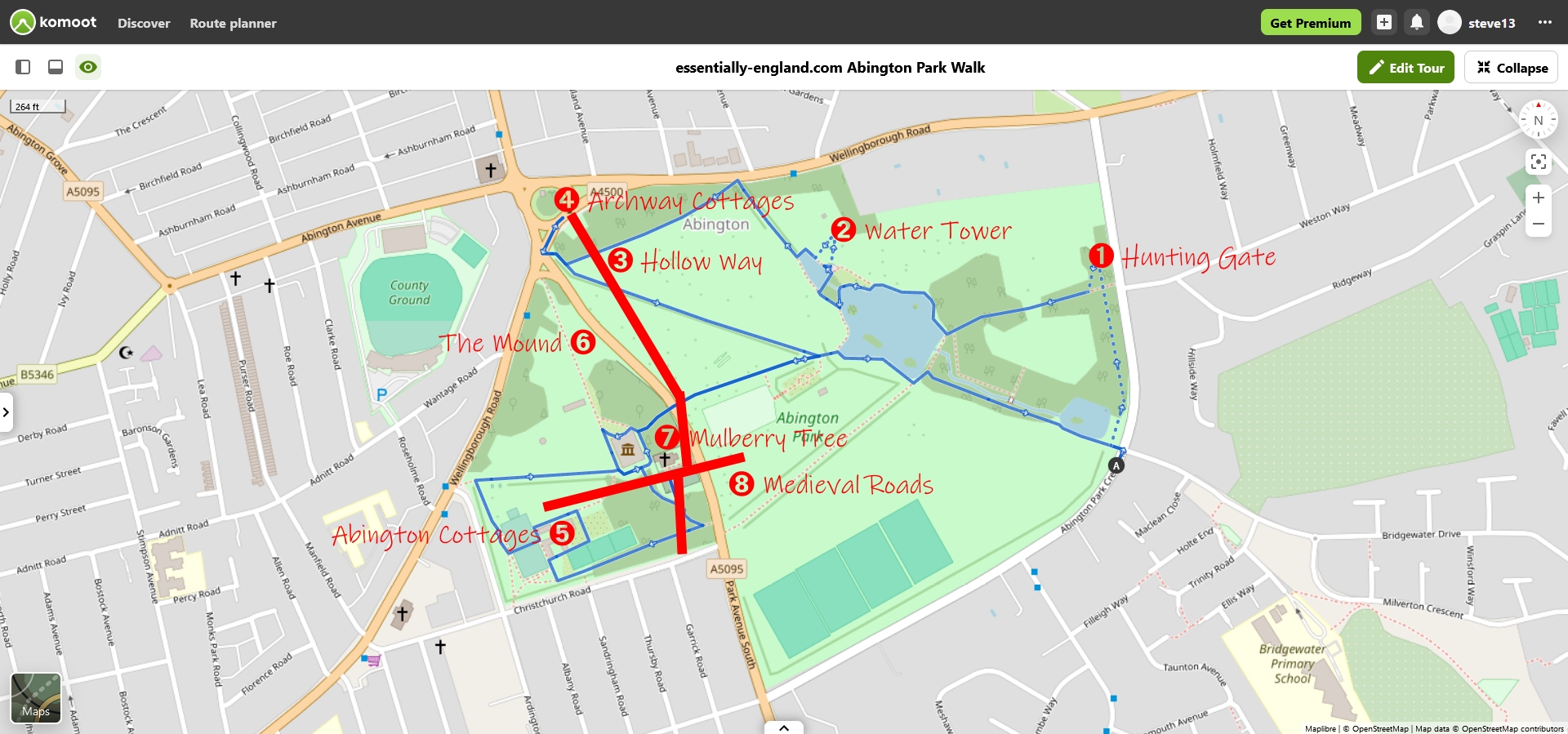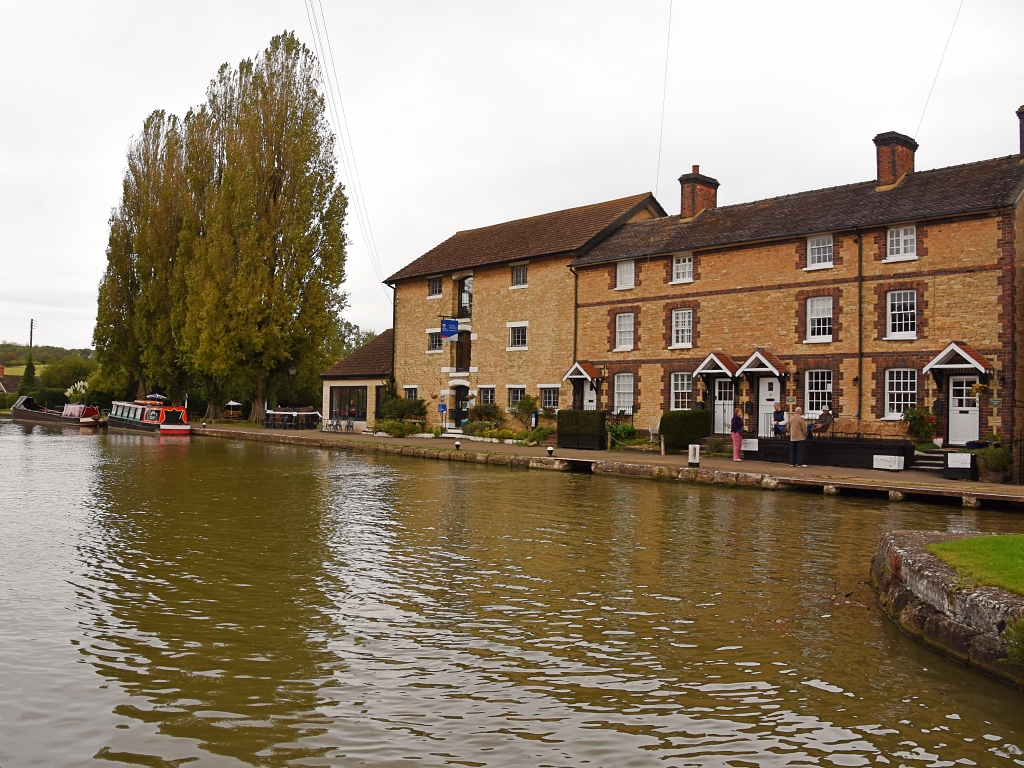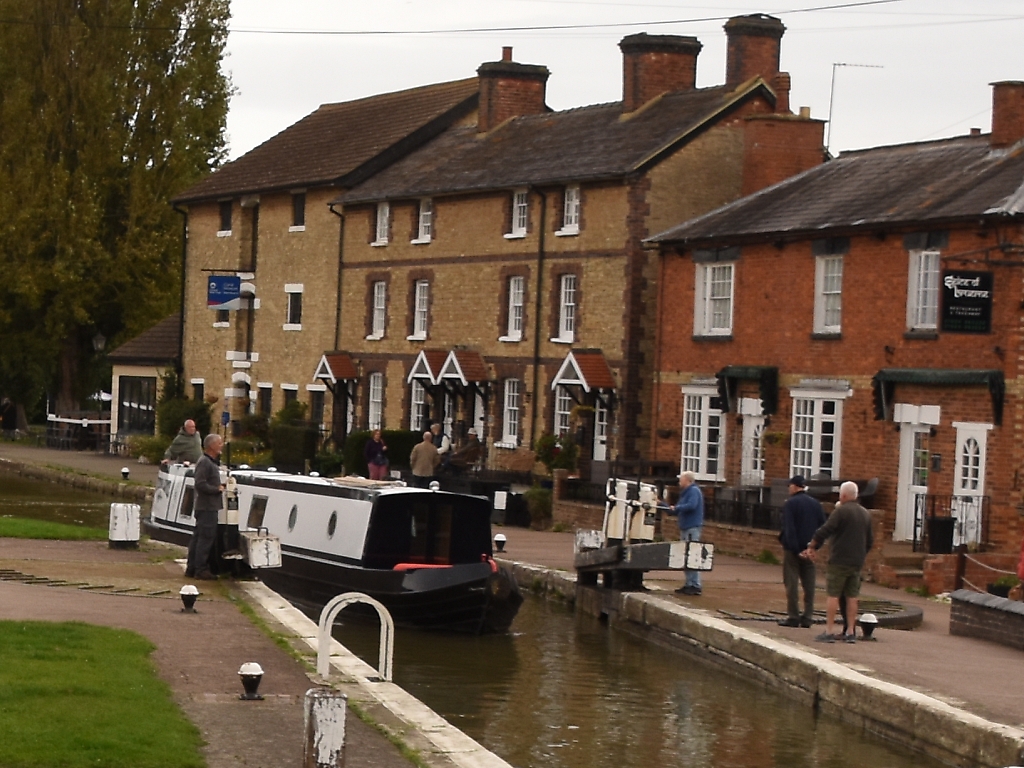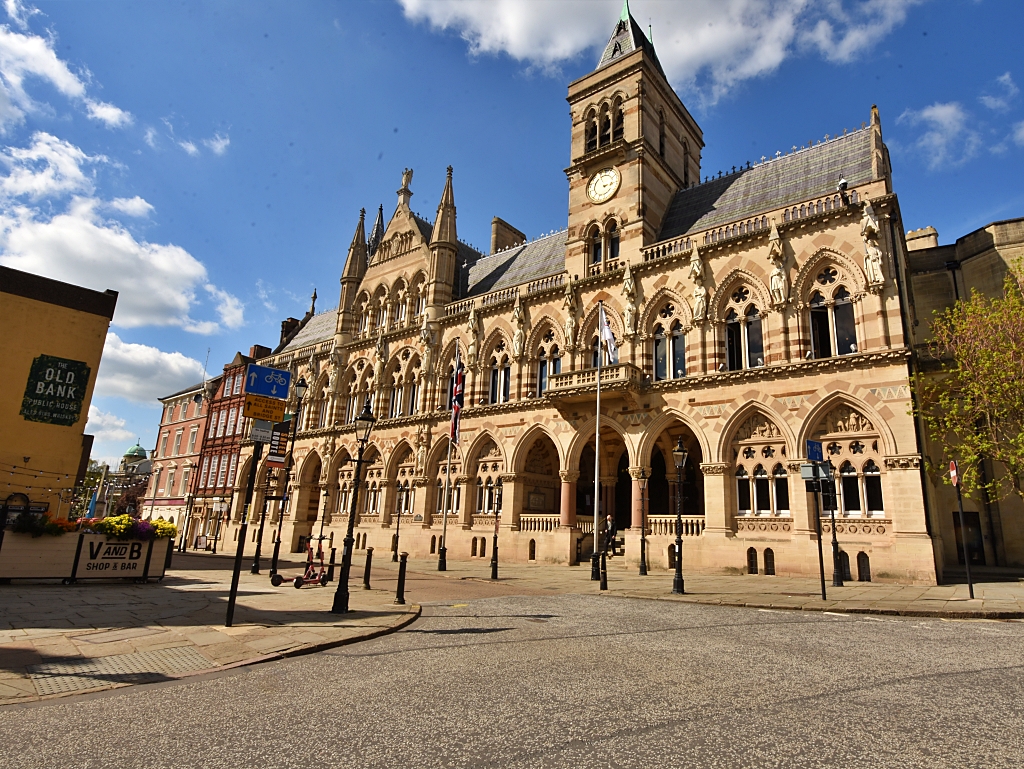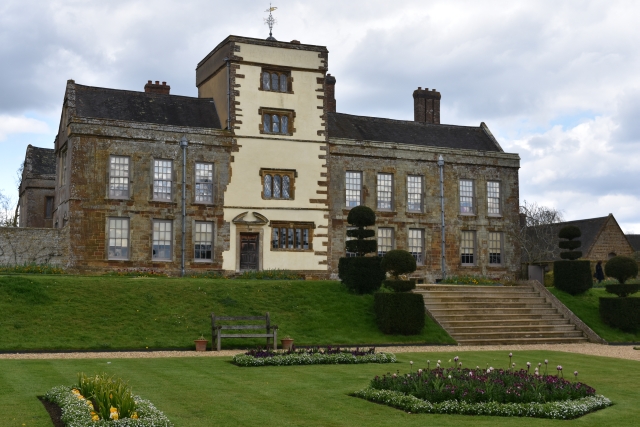Abington Park
Abington Park is Northampton’s largest and oldest public park. It has been listed as one of the best five parks in the East Midlands and is second to Kew Gardens in London for the largest number of different trees species within its boundary. At around 120 acres, this pretty park was on our after-wet-weather walking to-do-list as you can explore it using all the hard surface paths. And, naturally, it being an Essentially England walk, there’s plenty to see and find out while taking in the lovely parkland and lake views.
We chose a bright, chilly late November afternoon to wander around Abington Park and were hoping to catch the last of the autumn colours. However, we were a little late in the season and most deciduous trees were already bare. That aside, after a pond-side picnic in the sunshine we set off to explore the parkland and wildlife.
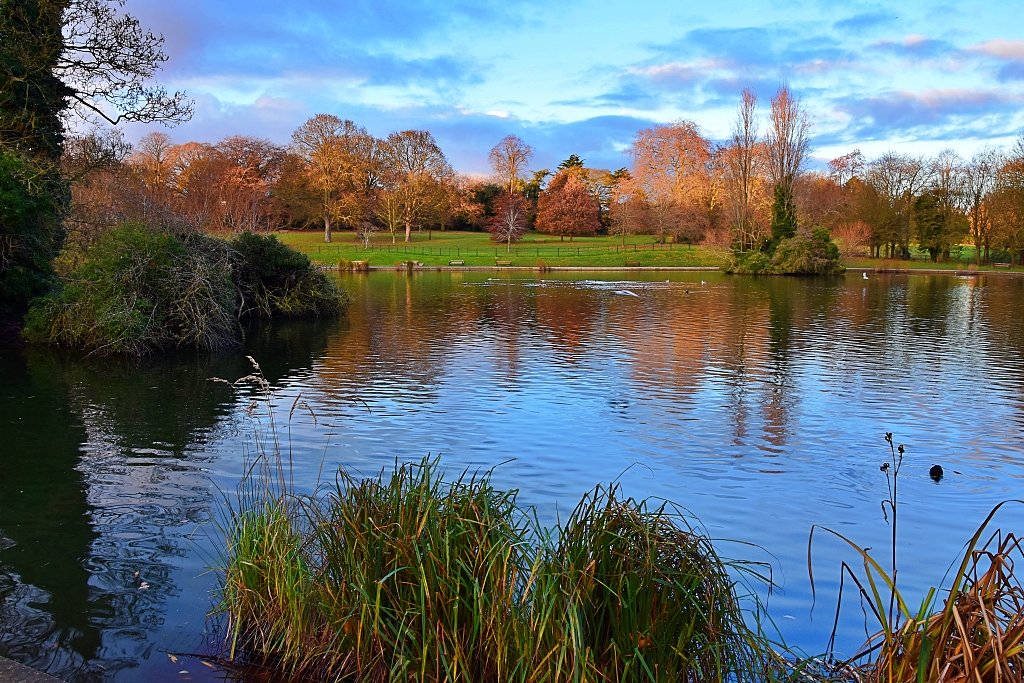 Autumn Sunshine in Abington Park © essentially-england.com
Autumn Sunshine in Abington Park © essentially-england.comAbington Park Map
We started our walk from Abington Park Crescent, where you can find free roadside parking. Use the postcode NN3 3DJ for guidance. To the best of my ability, I’ve marked where the historically interesting sites are, but if you click on the map link to follow the route on your mobile device or to download the gpx file, these points will not be marked on the route.
A Short History of Abington Park
At the heart of Abington Park lies the medieval village of Abington, which was first recorded in the 1086 Doomsday Book. The name means a farm or settlement connected to Abba. A quote from the Penguin translation of the Doomsday Book says:
"The same man holds 4 hides in ABINGTON. There is land for 8 ploughs. In demesne is 1 [plough], with 1 slave, and 12 villains, with 5 bordars, have 2 ploughs. There is a mill rendering 20s, and 20 acres of meadow. It was worth 20s; now £4".
At the time of the Doomsday survey, the owner of Abington Manor was the Norman Richard Engaine. We assume he was given the manor after the Norman Conquest of 1066 and dispossessed the Saxon, Alwin the Hunter. In 1086 Richard had eighteen people living and helping him on his Abington estate.
The next records we have of Abington date to 1665 and 1669, when the village consisted of the manor house, a church, four farmhouses, twenty cottages, and four almshouses.
The first known map of Abington comes from 1671 and shows the village spread around a staggered crossroads with the church and manor house in the north-west corner. The village green was on the other side of the north road (Hollow Way) much where the playground is now. Beyond the green were the village fishponds.
Between 1736 and 1742, much of the village was depopulated and removed as the manorial land was landscaped into a grand garden. Some buildings to survive included the church, Archway Cottages and rectory or Park Keeper’s cottage, and some farm buildings.
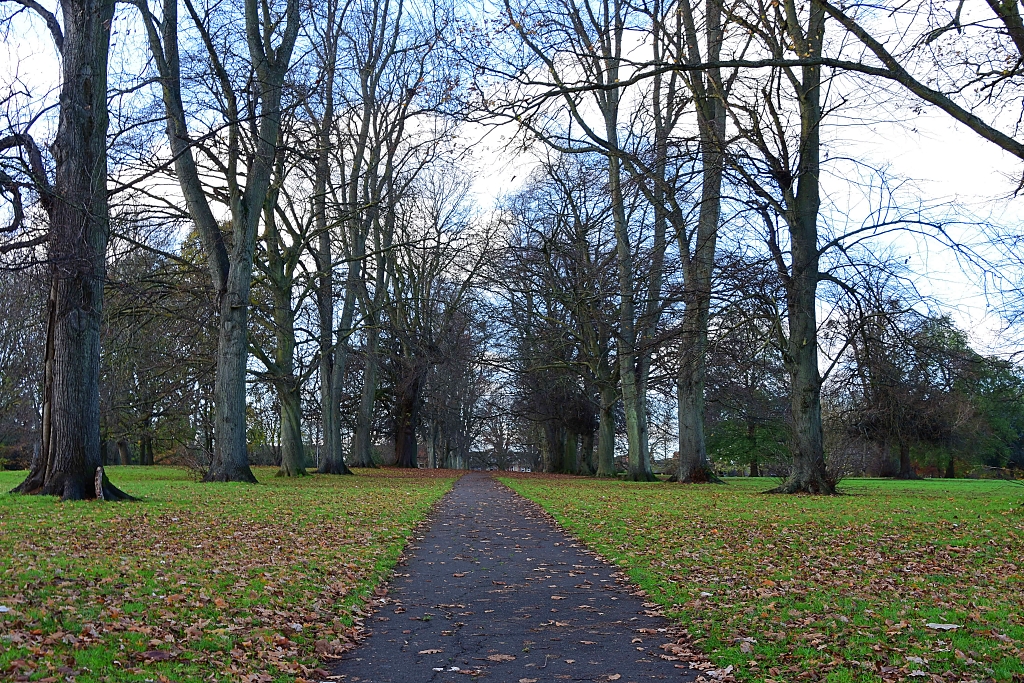 Tree Avenue in Abington Park © essentially-england.com
Tree Avenue in Abington Park © essentially-england.comAbington Park Museum
What is now Abington Park Museum used to be the manor house in Abington, called Abington Hall. The earliest surviving parts of the hall date from the early 16th century when the Bernard family, Lords of the manor between 1415 and 1669, extended the manor house. The last of the Bernard family to own Abington Manor were Sir John, MP for Huntingdon, and his wife Elizabeth, who was the granddaughter, and last descendent, of William Shakespeare.
William Shakespeare and Abington Hall are connected by an intriguing story. Neither notes nor papers were found upon the playwright's death, and it is thought that he may have passed them to his granddaughter Elizabeth. Yet when she died in February 1670, her possessions contained no papers belonging to William Shakespeare. Did she hide them in Abington Hall?
I'm sure historians and Shakespeare scholars have explored Abington Hall, but wouldn't it be fabulous if we suddenly found a new Shakespeare play?
In the late 17th century, Sir John Bernard sold the manor to William Thursby, a lawyer from the Middle Temple, who went on to rebuild much of the house. Half a century later, around 1736, the house and gardens were extensively altered by John and Mary Thursby, who enlarged the house once more, and added new classical south and east facades.
In 1841, the Thursby line came to an end, and banker Lewis Loyd bought the estate.
In 1845, it was converted into a private care home for the mentally disturbed and called Abington Abbey Retreat. The Retreat closed in 1892, and Lady Wantage donated the land and manor house to Northampton Council for use as a public park.
For more information about opening times and events, and a guided tour of some of the oldest rooms in Abington Park Museum click here.
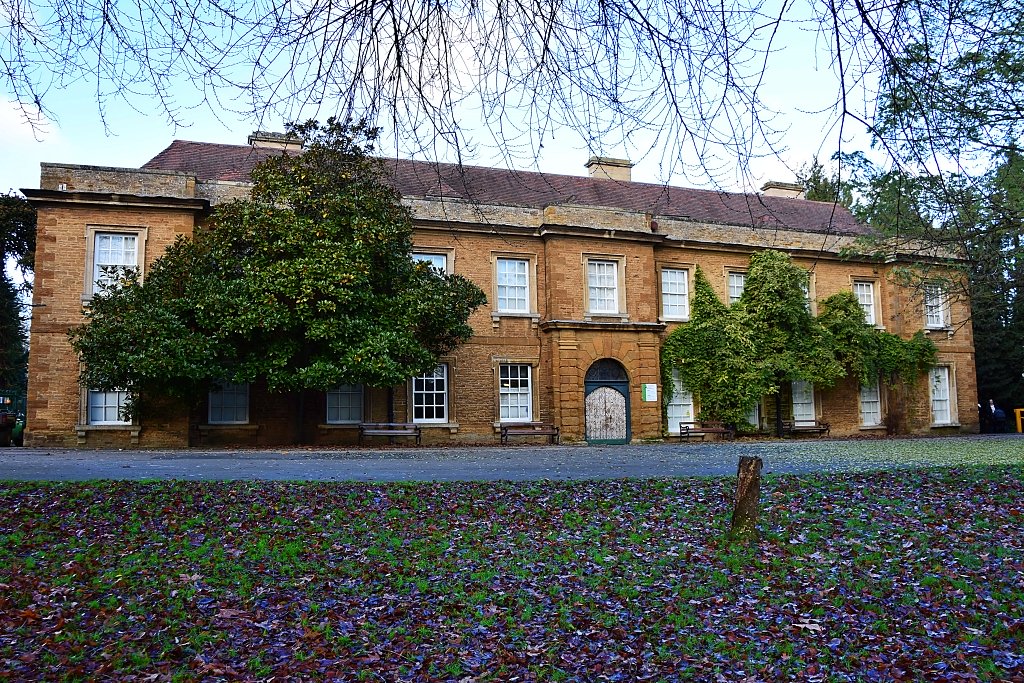 Abington Park Museum © essentially-england.com
Abington Park Museum © essentially-england.comNorthamptonshire Witch Trials
On the 22nd of July 1612 five witches - Arthur Bill of Raunds, Mary Barber of Stanwick, Helen Jenkinson of Thrapston, and Agnes Browne and her daughter Joan from Guilsborough - were executed on the Abington Gallows. For the first time in English history, each of the witches was “dunked” in a local pond or river in a simple test to determine witchcraft.
If they drowned, they clearly had no powers and were cleared of witchcraft. If they survived the dunking, the law assumed they'd been using witchcraft to stay afloat.
After surviving the dunking, the five witches were tried at Northampton Castle, and all were found guilty of witchcraft.
The Abington Gallows is believed to have been positioned at the staggered crossroads within the medieval village, which from the old maps I’ve seen, would put the gallows in, or close to, the church graveyard.
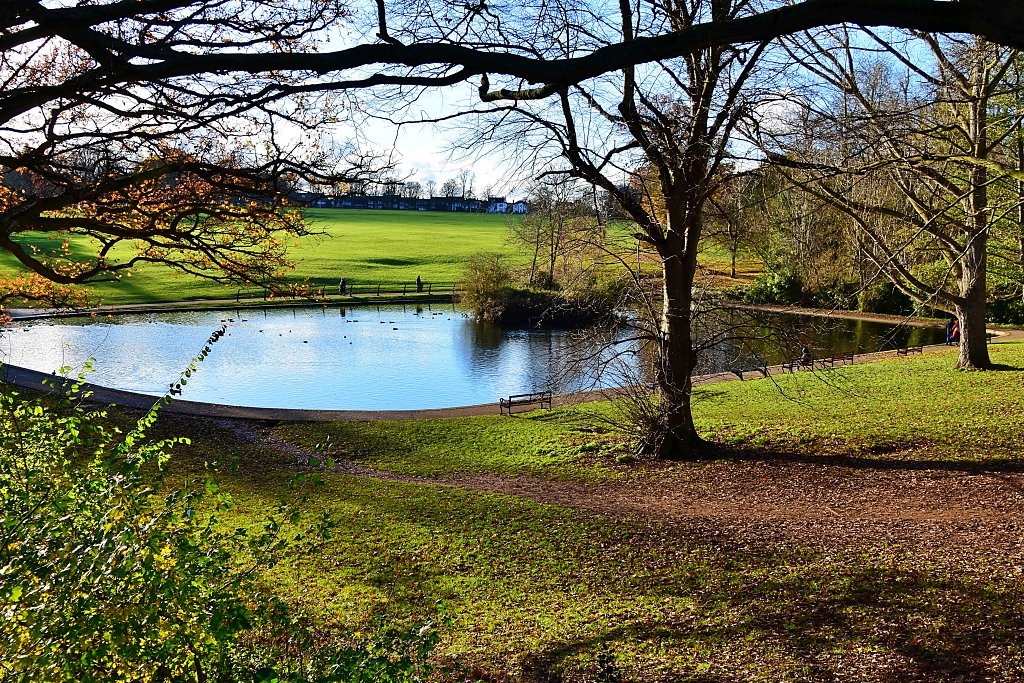 A Fine Spot by the Pond for a Picnic Lunch © essentially-england.com
A Fine Spot by the Pond for a Picnic Lunch © essentially-england.comOther Things to Note in Abington Park
There’s a lot of history surrounding the medieval village and manor, but the park also offers plenty of interest for those not so excited about history or landscaped gardens.
A play area for children occupies the site of the old village green. Birds and ducks have made the three ponds their home, And in the summer, there's the chance to hire a pedalo and enjoy a bit of time on the water.
Bird Cage Walk - a row of aviaries housing all manner of birds - is popular with adults and children alike. And if you enjoy listening to music, regular events are held at the bandstand.
The more energetic can find tennis courts, bowling greens, and plenty of open green space to play ballgames. And when you need a break there is a large café with indoor and outdoor seating!
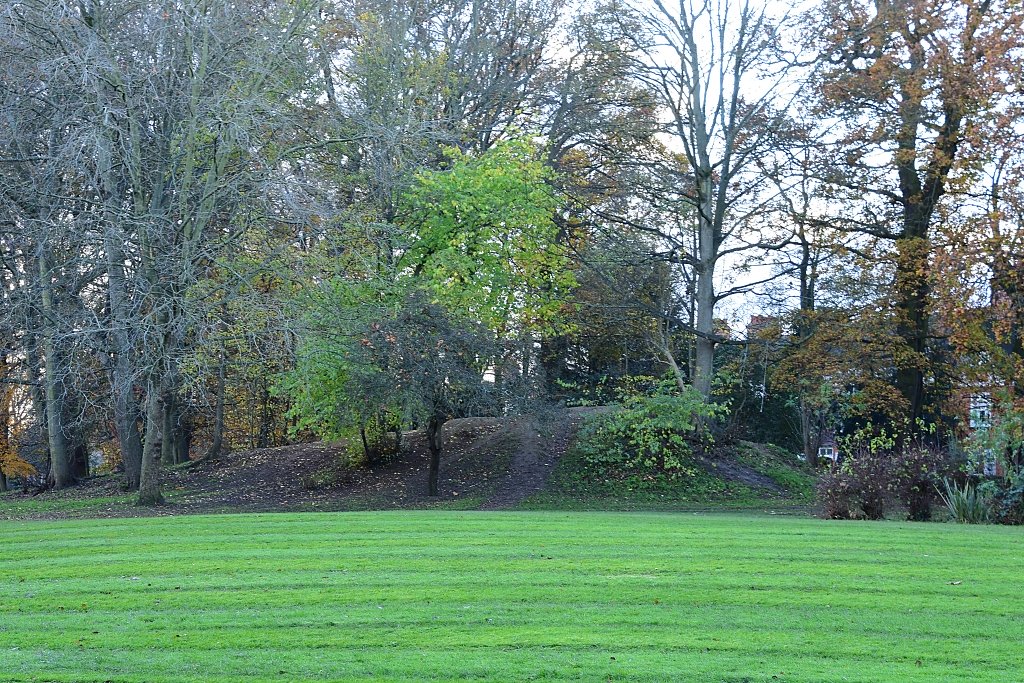 The Mound in Abington Park © essentially-england.com
The Mound in Abington Park © essentially-england.comThe Mound
What is the mound?
Nobody knows for certain, though there are many suggestions.
While it was labelled “tumulus” or burial mound on early Ordnance Survey maps, a map from 1671 describes the field in front of the mound as “open field beneath windmill hill”. Perhaps there was a windmill here, as one was recorded in the Doomsday Book.
Other ideas suggest a spoil heap from the digging of the manor's cellars, a decorative garden feature, or a buried first World War tank!
The last idea is not as farfetched as it appears, as a tank was parked near the mound between the wars, but later removed due to complaints from the locals.
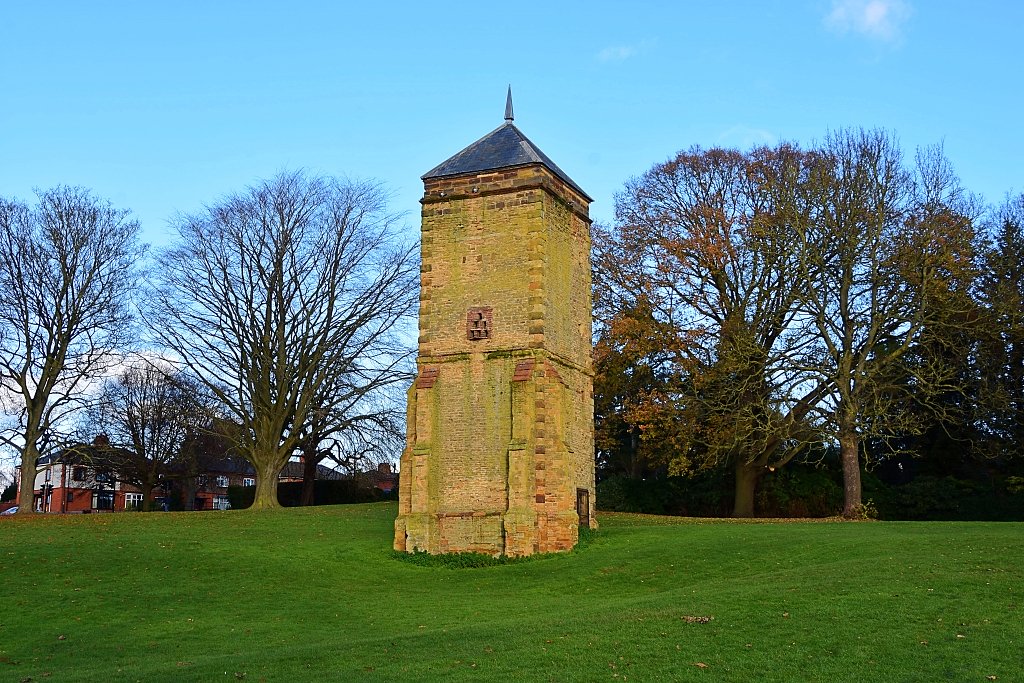 The Water Tower © essentially-england.com
The Water Tower © essentially-england.comThe Tower
The water tower was built in 1678 by William Thursby to supply water to the manor house. It was later modified to allow pigeons to roost and is often called the Pigeonry.
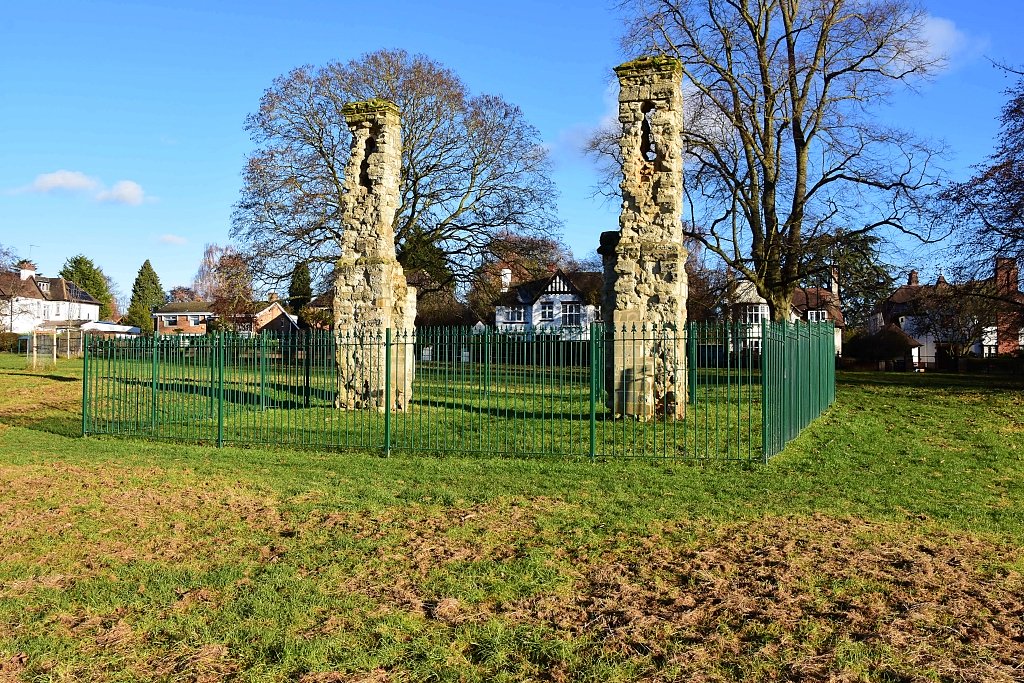 The Hunting Gate in Abington Park © essentially-england.com
The Hunting Gate in Abington Park © essentially-england.comThe Hunting Gate
The Hunting Gate is a folly or ornamental fake ruin that was part of the landscaped gardens surrounding Abington Hall. The two-chimney-stack type stone structures were originally joined by an arch.
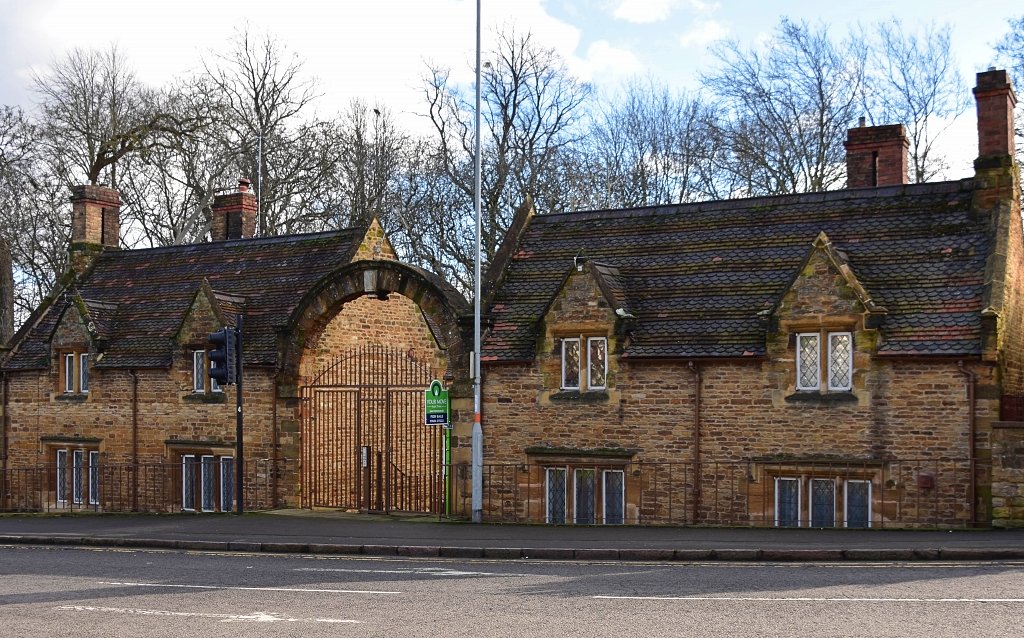 Archway Cottages © essentially-england.com
Archway Cottages © essentially-england.comArchway Cottages
The Grade II listed Archway Cottages were built in the late 17th century as a formal entrance to the estate.
The passage between the two symmetrical stone cottages leads to the “Hollow Way” which was the road from the north into the medieval village of Abington.
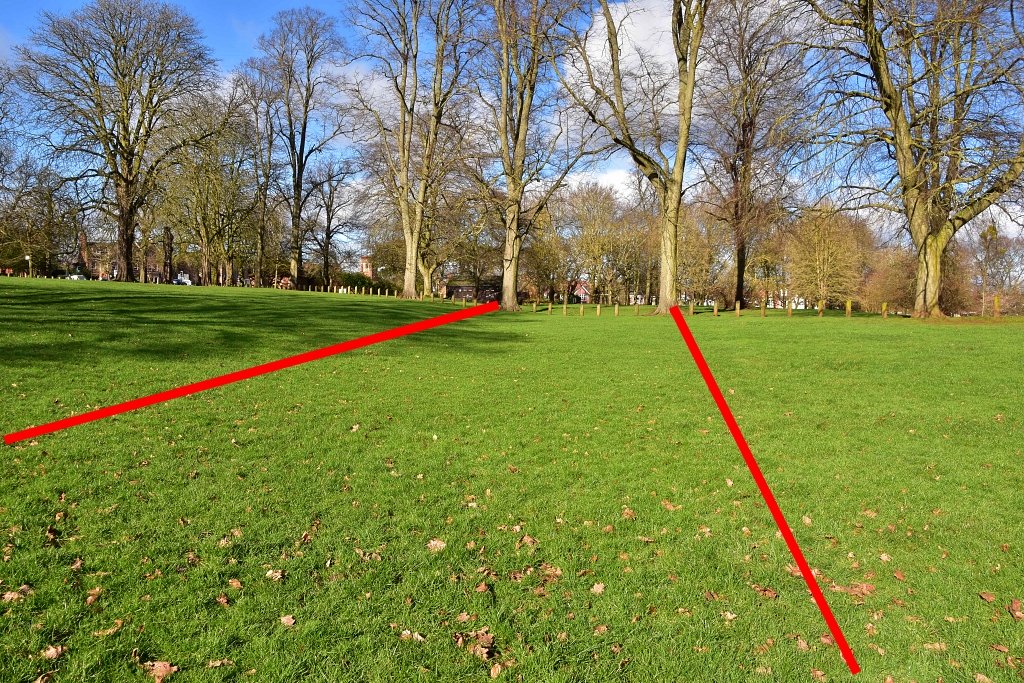 The Hollow Way © essentially-england.com
The Hollow Way © essentially-england.comThe Hollow Way
The Hollow Way runs under the arch of Archway Cottages to the site of the medieval village of Abington. At times the track is around 5 feet deep and as it approaches the manor house there are flat platforms on which the houses of the villagers were built. There are also signs of ridge and furrow in the field where villagers grew their produce.
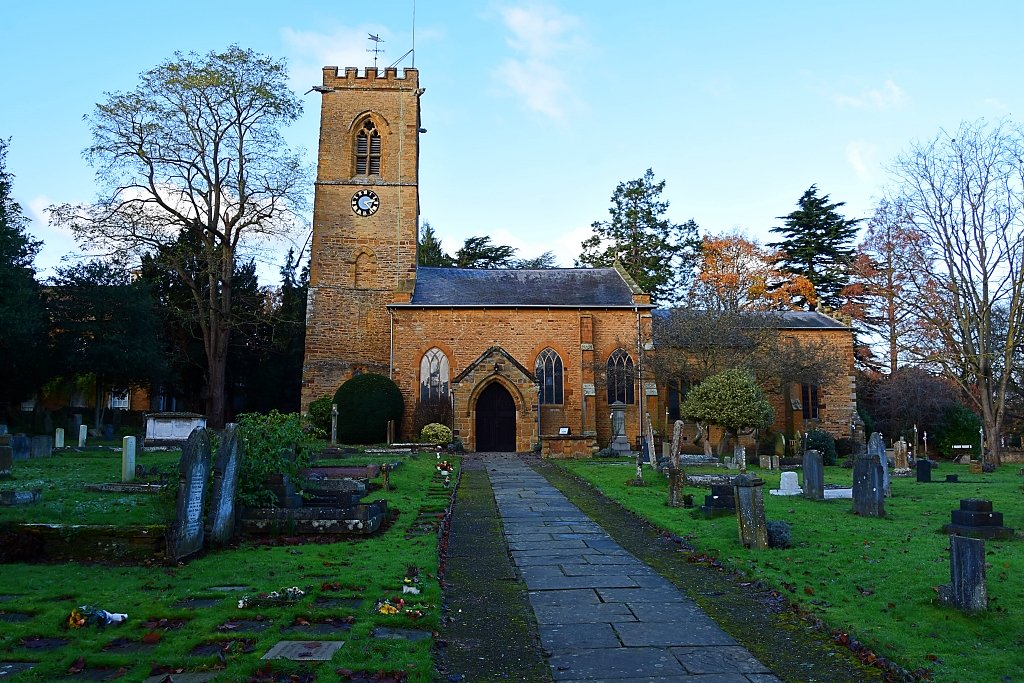 St. Peter & St. Paul’s Church © essentially-england.com
St. Peter & St. Paul’s Church © essentially-england.comSt. Peter & St. Paul’s Church
The earliest part of the current St. Peter & St. Paul’s Church dates from the late 12th century. Much of the church was rebuilt in 1821 after it was badly damaged in a storm. A new west gallery was also added between 1938-9.
William Shakespeare’s granddaughter Elizabeth is buried here.
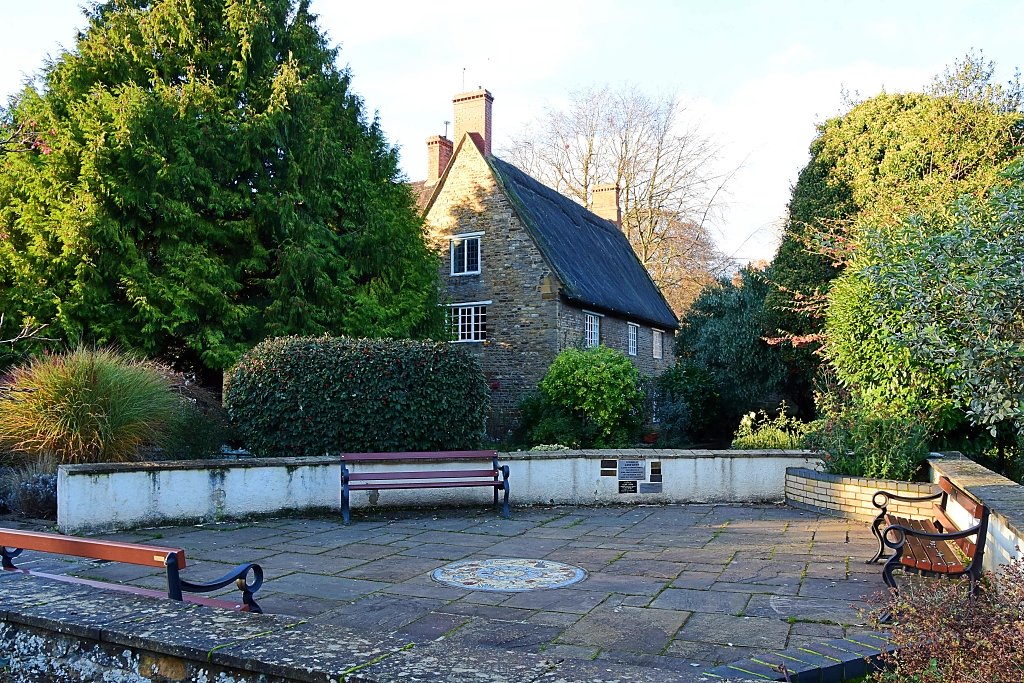 Abington Park Cottages from the Sensory Garden
Abington Park Cottages from the Sensory Garden © essentially-england.com
Abington Park Cottages
The Grade II listed thatched cottages besides the Sensory and Rose Gardens were once the rectory and a farmhouse and date back to the late 17th century.
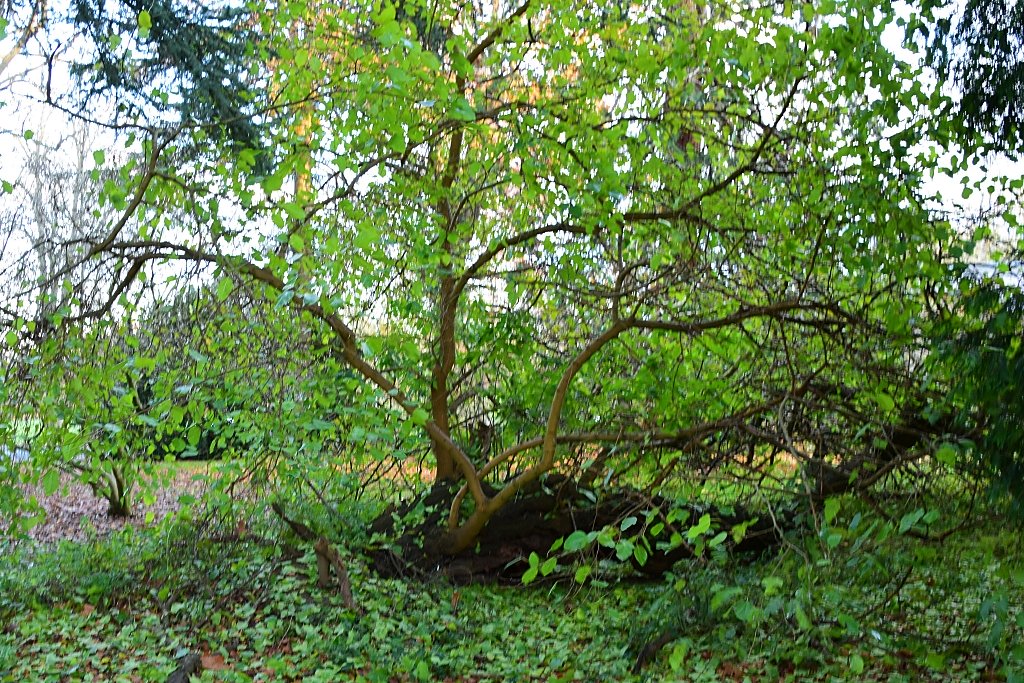 Mulberry Tree Planted in Tree Garden
Mulberry Tree Planted in Tree Garden © essentially-england.com
Abington Mulberry Tree
In the tree garden between the church and museum stands a Mulberry tree that was planted in 1778 by actor David Garrick to celebrate his friendship with Anne Thursby. On one of his visits to Abington Hall he bought a cutting from Shakespeare’s garden in Stratford-upon-Avon.
In April 2016 another Mulberry tree was planted in the park to commemorate the 400th anniversary of William Shakespeare’s death.
And to finish off, what about ghost hunting?
Both visitors and staff at the Abington Park Museum have reported ghostly activity. The ghost, or ghosts, have not been identified, but could it be one, or all, of the witches that were executed on the gallows not far from the medieval manor house? The ghost(s) could also be one or more of the patients from the mental asylum!
If you enjoy haunted houses, then there are several night-time ghost hunting events throughout the year.
Northamptonshire Holiday Cottages
Northamptonshire is a largely rural county in the centre of England, renowned for shoemaking, stunning countryside, and very pretty villages. It makes a great place for walking and cycling and is ideal for a relaxing holiday or short break.
Below, we've collected some holiday cottage ideas. Personally, I would love to stay in Stoke Bruerne, right next to the canal. Stoke Bruerne is a friendly, pretty village with a couple of pubs, an Indian restaurant, and easy walking from the door.
To browse holiday cottages in other parts of England click here, or you could use our Booking.com search box.
